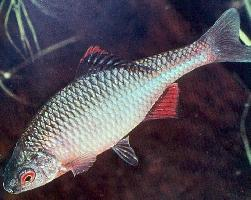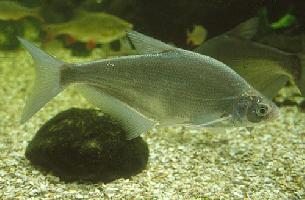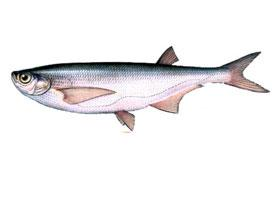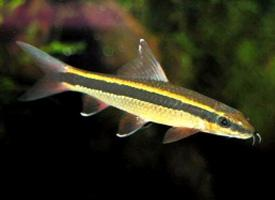
Váhy a míry
| Délka | od 6 do 10 cm |
|---|
Biologická data
| Délka života | 5 r |
|---|
Popis zvířete
The Amur bitterling (Rhodeus sericeus) is a small, yet fascinating freshwater fish that belongs to the family Cyprinidae, which includes carps and minnows. Native to East Asia, its range spans from the Amur River basin, across China, Korea, and parts of Russia, thriving in a variety of freshwater habitats including rivers, lakes, ponds, and even in some brackish waters. This species is known for its remarkable reproductive strategy and vibrant appearance, making it a subject of interest both ecologically and in the aquarium trade.An adult Amur bitterling typically measures between 6 to 10 centimeters in length, though some individuals may grow slightly larger. The body of the Amur bitterling is elongated and laterally compressed, with a dorsal profile that is more curved than the ventral side. Its scales are small and tightly packed, giving its skin a smooth appearance. The coloration of this species is striking, with males displaying more vibrant hues than females, especially during the breeding season. Males often exhibit a brilliant mix of iridescent blues, greens, and reds along their bodies, with their fins sometimes edged in white or red, adding to their display. Females, while more subdued in color, still present a graceful appearance with their silver-gray bodies and sometimes a hint of green or yellow along the sides.
One of the most remarkable aspects of the Amur bitterling is its unique reproductive strategy, which involves a symbiotic relationship with freshwater mussels. During the breeding season, which typically occurs from late spring to early summer, the female Amur bitterling possesses an elongated ovipositor, which she uses to deposit her eggs inside the gill chamber of living mussels. The male then fertilizes these eggs by releasing sperm into the water current, which subsequently enters the mussel's gills. This extraordinary method of reproduction provides the developing bitterling embryos with a protected environment, away from predators and adverse conditions outside. After about a month, the fully developed juvenile bitterlings exit the mussel, ready to fend for themselves.
Amur bitterlings prefer slow-moving or stagnant waters with abundant vegetation. These environments not only provide them with cover from predators but also support a rich diversity of invertebrates, which make up the bulk of their diet. They feed on a variety of small aquatic organisms, including worms, crustaceans, and insect larvae.
Despite their beauty and intriguing life history, Amur bitterlings face several threats in the wild. Habitat destruction, pollution, and the introduction of non-native species have contributed to declines in their populations in some areas. Additionally, their reliance on freshwater mussels for reproduction means that any factor adversely affecting these mollusks can also impact bitterling populations. Conservation efforts are therefore essential to ensure the survival of both Amur bitterlings and the freshwater ecosystems they inhabit.
In conclusion, the Amur bitterling is a captivating species that showcases the complexity and interconnectivity of freshwater ecosystems. Its vibrant colors, unique reproductive strategy, and ecological role make it a species of interest not only for aquarists and scientists but also for conservationists aiming to preserve the biodiversity of freshwater habitats.
Podobná zvířata
Nové fotografie zvířat
Top 10 zvířat
- Chinese water dragon (Physignathus cocincinus)
- Galápagos tortoise (Geochelone nigra complex)
- Dolphin gull (Leucophaeus scoresbii)
- Japanese macaque (Macaca fuscata)
- Colombian red howler (Alouatta seniculus)
- Sea urchins (Echinoidea)
- Moustached guenon (Cercopithecus cephus)
- Diana monkey (Cercopithecus diana)
- Common reed warbler (Acrocephalus scirpaceus)
- Common house mosquito (Culex pipiens)


